Emergent Universe Oratorio
SAMUEL GUARNACCIA composer | PAULA GUARNACCIA producer | CAMERON DAVIS visual artist
The Emergent Universe Oratorio (EUO) is an hour-and-a-half long choral and orchestral composition which often is co-presented with a series of dynamic paintings created by the visual artist, Cameron Davis. It was conceived in response to the current scientific cosmology as presented in the 2011 documentary Journey of the Universe.
The EUO was deeply inspired by the work Pierre Teilhard de Chardin, Thomas Berry, Brian Swimme, and Mary Evelyn Tucker and John Grim from the Forum on Religion and Ecology at Yale University. These seminal thinkers have endeavored to lead us to a new understanding of the place of humans in the Universe. The film, Journey of the Universe, inspired this artistic musical expression built on the themes of the documentary—to provide a way to enter in, and directly experience, this new cosmology, deepening our evolving understanding of and response to the ‘new story’.
“The great discovery of contemporary science is that the universe is not simply a place, but a story—a story in which we are immersed, to which we belong, and out of which we arose.” (Swimme/Tucker)
The EUO music and lyrics express this new story, endeavoring to evoke reverence and responsibility. The EUO also is a call to inspire humanity to participate in Earth’s transition toward a mutually enhancing Earth-human relationship. The work includes lyrics and texts of visionary poets, scientists, writers—Thomas Berry, Gerard Manley Hopkins, Rainer Maria Rilke, Wendell Berry, Brian Swimme, John Elder, and Mary Evelyn Tucker.
The EUO’s intent is to provide a pathway through art and music to a “total commitment to (all) life” (Thomas Berry), which arises from the deep awareness, awe, and reverence for our absolute unity with the Universe.
Interview with Sam and Paula Guarnaccia
Kari | Sam and Paula, what prompted you to interweave science, music, words, spirituality, philosophy, and billions of years of history into this beautiful narrative that tells the story of everyone and everything?
Sam | Well, the simplest answer is the insatiable curiosity that drives all inquiry—and that is that everything is connected. Something came to me in thinking about that—music is like water flowing beneath that bridge that is—being. Music has a way of expressing the inexpressible. It HAD to be a great interweaving of all the ways of knowing that are possible for humans.
Paula | With that being said, we wanted this also to be scientifically valid, so we had a number of scientists read through it and they did make some very substantive changes. Obviously it’s evolving all the time, but right now, the scientists have said it’s valid.
Sam | Absolutely. At the Philadelphia concert introduction, Ursula Goodenough, a phenomenally important cell biologist (who was one of the people who reviewed the libretto and made some changes), declared it “scientifically flawless,” which was very, very gratifying to us. She also very succinctly and powerfully talked about how humans really process everything through stories.
Paula | We are really standing on the shoulders of giants. Giants who have thought through these concepts so beautifully and we’re just giving the latest voice to this wonderful story that is not just ours; it’s everyone’s story. We don’t claim it, we just are expressing it.
Kari | Why did you choose to tell the story in the form of an oratorio when you could have maybe chosen to do a series of songs, a concept album, one long Guinness World Record track, an opera, a soundtrack that could include a filmography, or images, or dance? Why an oratorio?
Sam | I love that question. It’s not one that I’ve ever been asked before. I guess one answer is the oratorio has a great history. It’s a story form in music that goes way, way back, before opera. Probably the world’s best known oratorio is Handel’s Messiah. It was important to me, and then to all of us as we went forward, to think—what form could stand up to the test of time and hopefully become an important contribution to mainstream art and cultural expression? My hope was that this would have enough substance and be good enough to be able to do that.
Paula | In terms of your question about images, we always felt that the visual was an important component of the performance. That’s why we collaborated very closely over several years with visual artist, Cameron Davis. Cami created 12 beautiful, very large paintings for the first performance, and they’ve been present for all of the performances in one way or another. They formed the set, a visual representation that carried so much of the emotional content as well. We’ve always felt that was extremely important.
Sam | And then another important part of my answer to this wonderful question is—the real dream that we have for this project is, at some point, to have the resources to collaborate with a passionate and highly skilled documentary filmmaker. The oratorio would be essentially the soundtrack source for a really beautiful documentary that contained all of the music, but most of the words transformed to beautiful visuals, maybe with some underlying text.
Kari | Oh, I think it would lend itself to that! Hopefully, somebody comes forward that you could collaborate with. I also wanted to comment on how well it integrates science with beauty and things that we ‘know’ about the universe. Then there are things that we ‘can’t know’. How does this tension inform your work?
Sam | Well again, I love this question—so insightful when you put the first ‘know’ in quotes, the ‘knowing’ of facts—the great science story—the lists of truly astounding things that we now know. Then there is the knowing of personal relationship. One thing this question prompted in me was thinking of Thomas Berry and Brian Swimme’s original The Universe Story book of the early ’90s; they talk about, “How does the universe work?” In the language of Thomas Berry, there is a cosmological principle that has three elements: diversification, interiority/subjectivity, and communion.
Once you get these different identities, then they can enter into relationships. The title is Emergent Universe Oratorio, and emergence is not a new concept, but it is relatively new. It is the appearance of unpredictable, unexpected, unforeseeable dynamics and structures from elements that exist at lower/simpler levels. Everything in the universe is emerging through this process of what is called cosmogenesis. It’s the constant becoming of everything. Another way of saying it: the Universe is astonishingly creative.
Paula | It’s one of the concepts … or the takeaways for an audience, and it starts right in the title, Emergent Universe Oratorio … emergent … this idea that things are evolving or changing, that things are going to be revealed, that there’s an unfolding in life and the great humility that comes from knowing that. So the world we ‘know’, and I love the quotation marks too, because we know something but it’s not complete. Is it ever complete? We’re in an evolving world.
Kari | Let’s move onto the idea of Rising Earth Awareness, the theme of this edition, which is sort of related to ‘emergence’. How does the oratorio speak to that? And do you think the Earth is becoming more aware of us too?
Paula | Oh yes. As a matter fact, there is an Emergent Universe Oratorio phase two project that’s going to be earthbound. Sam can tell you about that.
Sam | If you are familiar with Robin Wall Kimmerer’s work, she is a Native American and a brilliant scientist. She is probably the leading authority in the world on mosses, which are among the first plants, and which are responsible for you and me being able to have this conversation.
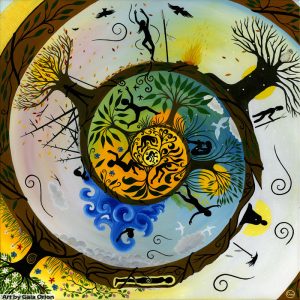
Paula | Robin’s book, Braiding Sweetgrass, is tremendous. We’re beginning a collaboration on a piece that, hopefully, will be reflecting earth awareness, so it’s going from the cosmos down into the world of mosses and lichens—very earthbound. One way to say this in terms of rising earth awareness is that once you take on board the story of the universe and you understand where we came from and the factors that have led to the development of the Earth, then you can begin to understand where we are, and perhaps where we’re going.
Sam | Your question also suggests Lynn Margulis’ and James Lovelock’s Gaia hypothesis—that the Earth is a sentient being, a self-organizing system that is actually experiencing a fever and is responding with an immune response to that fever, and that immune response is this conversation we’re having. There are hundreds of thousands of little NGOs, individuals, and groups like Kosmos, Emergence Magazine, Bill McKibben’s 350.org, and so forth, all contributing to a global immune response to the planetary threat.
Freeman Dyson, professor emeritus at the Institute for Advanced Study in Princeton, said, “The more I examine the universe and study the details of its architecture, the more evidence I find that the universe in some sense must have known that we were coming.”
Freeman Dyson is, I would say, one of the most skeptical scientists on Earth. For him to say that is a powerful affirmation that the Earth is becoming more aware of us too.
Kari | I wanted to talk a little bit about the film, Journey of the Universe, by Mary Evelyn Tucker and Brian Swimme, and how that film acted as a catalyst for the libretto that accompanies your oratorio.
Paula | Well, I can start that. When we met Mary Evelyn Tucker and John Grim in June of 2011, we were already working with Cami Davis. All three of us were working together on a piece that was Earth-based at that point. We had the concept of an oratorio, a libretto and we were working toward it. There was a little bit of music written, just the beginning of things. When we met Mary Evelyn and John—they came to dinner at our house—and it was like a lightning bolt quite frankly. We saw the film, and thought “What other story is there to tell? I mean this is THE story.” We worked with Mary Evelyn, John, and Brian Swimme to vet the libretto. They have been tremendous supporters of this work. There’s a deep connection there.
Sam | Yes, the way the chapters are arranged in the book and in the film—the sequences of scenes in the Journey of the Universe documentary—when you have a chance to see it, you will for sure recognize the flow.
Kari | They are some of the giants that you’re standing on the shoulders of.
Sam | Yes, they are. They’re just really remarkable. They started the Forum for Religion and Ecology at Yale. Yale has arguably the best environmental school—the Yale School of Forestry—and the Yale Divinity School is renowned. They have bridged those two things, bringing religion and ecology together. There’s great power and great insight in all of that work.
Kari | In the same vein as the ideas of crossing domains and integrating everything and everybody, you involved children in reading the Lament, and it struck me as a very powerful and very timely addition because we have so many young voices now as leaders of movements. Was the decision to include young voices a deliberate one or was it arbitrary? Do you feel it’s important that they’re included?
Paula | Oh yes, and it was not arbitrary at all. We had this idea to do a narrative of lost species, ecosystem loss, and just loss. We worked first with Amy Seidl (biologist at the University of Vermont), who did the initial writing, and we were searching for a young person to read with her. We settled on her daughter Helen, who auditioned and was just great. So it started off being a mother-daughter conversation first. Then, when we went to Cleveland, we thought, “We don’t have a mother-daughter, but why not two young people?” We had connections to some charter schools in Cleveland. We auditioned a bunch of young people and two of them, Niko and Anaria, did the reading there.
In Philadelphia, we changed the format again. We thought, “What about having the young person speak to the adult?” We ended up with the narrator—again a young person—with the adult reflecting the species losses back to her. All of these losses—like the 9/11 memorials when they recite all of the names—the naming is so powerful.
Kari | I got the sense that it was very deliberate, but you just highlighted exactly how deliberate, what a process that was, which I think is so beautiful, powerful, and a really great idea.
Paula | Well, it did evolve. Each one is a little different. We tweaked them a little bit, too, by looking at the list of what’s currently endangered or extinct, and asked if there was some new species on the list? There is this huge list you can find online and you can just pull from it and there’s so much to choose from. Those lists are enormous. It’s absolutely terrifying. We share the Lament part—yes, very, very deliberate, evolving and powerful—right in the middle of the oratorio.
The Cascade – Lament involves children naming endangered and extinct species. This video shows the different ways that children made their statements in each of the three performances.
Endless Spring | The Art of Cameron Davis
The Emergent Universe Oratorio project represents a three-year collaboration between composer Sam Guarnaccia; his wife and executive producer, Paula Guarnaccia; and myself, a visual artist.
We immersed ourselves in the insights of readings addressing climate disruption, ecological collapse, and frameworks of courage for moving forward, trusting that there is a place for the arts to contribute. We came upon the insights of deep time thinking and evolutionary processes revealed in the book, Journey of the Universe, by Brian Swimme and Mary Evelyn Tucker. We realized that was the content to frame our project, and began a period of consultation with Mary Evelyn Tucker and her husband, John Grim, co-producers of the film, Journey of the Universe.
I created a body of 12 major paintings that I titled Endless Spring to accompany the oratorio premier.
The series began with imagery informed by ecological issues: Tar Sands Tonglen, Prayer for the Monarchs, The Meter of Eternity, a glacier elegy (Ursula Le Guin). Then, during late winter of 2013, snowdrop flowers became a personal metaphor for loss and renewal and the last half of the paintings included those images. Snowdrops emerge at the edge of retreating snow in Vermont’s early spring. They seemed like the perfect form to reflect both my despair of ecological collapse, and a notion of resilience. Endless Spring is also one of the many Buddhist terms for awakening. We need nothing less if we humans are to continue. In this way, I see the paintings as an invitation to celebrate our awakened belonging to Earth and the Cosmos. – Cameron Davis
Kari | When you encounter people who may not be as open-minded as children, or think as deeply about our future, or are unable to think in transformative terms, what would you say to someone who asks you how you define success with your project? How do you explain this project to people who wonder what’s in it for you?
Sam | These are such provoking and thoughtful questions that say so much about you and about the Kosmos community! Success with the project has been just being able to have the time to think and probe one’s insides, one’s heart, one’s emotions, and to express these things. Just the reward of being able to have the freedom, the choice, the privilege of being able to reach for something like this, to delve in and to try to evoke as much beauty as possible in a creative work, that is a huge success all by itself.
Kari | That addresses my next question. What do you hope the audience or listeners take with them after they experience your oratorio? So, we can consider that as one answer!
Paula | We always made sure that every program included the full libretto so that people could take it home. With one hearing, it does take a while to have things really enter and anchor inside. For people to have it in hand was really important—something that they could actually hold and take with them.
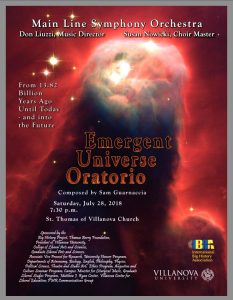
Kari | What does the future hold for the Emergent Universe Oratorio? I think the trip that you took to India recently might have something to do with that, too. Do you want to tell us what you were there to do?
Sam | We were invited by the International Big History Association organizers for their 2020 World Conference in India to create something like the oratorio for a South Asian-centered event. We were trying to integrate it with South Asian text and instrumental sounds to find a way to bring those together with Western music traditions as kind of a celebratory part of the conference, but also to have a portion of a piece—the movement of a larger piece is now what it seems to be—then go out and through India and maybe through the world as a cross-cultural or an intercultural expression of this great story.
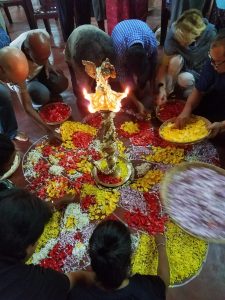 Paula | The trip was really an orientation for us. It was really for us to learn about India; to meet musicians, scientists, educators, and writers; to figure out what can be done; and, if we were the right people, how it would fit together. We began to have a little inkling of an understanding about India.
Paula | The trip was really an orientation for us. It was really for us to learn about India; to meet musicians, scientists, educators, and writers; to figure out what can be done; and, if we were the right people, how it would fit together. We began to have a little inkling of an understanding about India.
Sam | As for the Emergent Universe Oratorio, there are additional explorations of further places and people to engage this piece with the possibility that one of those occasions might yield that really high-level recording that would be sufficient to become a soundtrack for a film. So there are opportunities … New York, possibly Nashville, California, Puerto Rico, and possibly even Cuba. So those are tentative feelers that are out for further performances of the oratorio.
Before we go, I would love to respond a little bit more deeply to your previous question, “What do you hope the audience/ listeners take with them after they experience the piece?”
Kari | Please do!
Sam | That raises the question we get asked the most, which is “How do we save ourselves? What is it going to take?” This is something that was being wrestled with at a conference we were invited to attend in Southern India, just a week ago. I was asked that question in Princeton, too, a few months ago. What is it going to take to turn the tide of human presence on the Earth so that we become—as a global society—caretakers, and not exploiters, of the planet? How to end war and create a just society that works for everybody? We’ve never had that. “What is it going to take?” and I said this:
To be present to, and to act in your world to what is in front of you; to inspire, educate, and exemplify a new way of being not just environmentally but in every mode of being; and to train your mind, heart, and body to fall in love, to fall in love deeply with every being, structure, and living system around you, to envision and feel the Earth as your child, as if she were your child, your beloved for whom you will and would do anything.
I honestly think that if we can look at each other and other living things and the Earth itself with the kind of love that we have for our children, our husbands, our loved ones, our parents for whom we would do anything … it all does come down to love. Of course, one has to really outline how that love gets shown; what is love really, but living for the other? That glimmer of a feeling, that spark of realizing that we have a living relationship of love, of interdependence and inter-being with the entire planet Earth and with all other humans and all other living things.
Kari | That was beautiful. I’m so glad you read that. Thank you Sam and Paula!
Sam and Paula | You are so welcome.
Companion Book List
1. Swimme, Brian Thomas and Mary Evelyn Tucker. Journey of the Universe (book and/or documentary film). New Haven: Yale University Press, 2010.
2. Hathaway, Mark and Leonardo Boff. The TAO of Liberation, Exploring the Ecology of Transformation. New York: Orbis Books, 2009. (This book is amazing—leaves nothing out!)
3. Jourdain, Robert. Music, the Brain, and Ecstasy. New York: AVON Books, 1997.
4. Berry, Thomas. The Great Work or Dream of the Earth. New York: Three Rivers Press, Random House, 1999.
5. Wall Kimmerer, Robin. Braiding Sweetgrass. Minneapolis, Milkweed Editions, 2013.
Links
Journey of the Universe site: https://www.journeyoftheuniverse.org/news/emergent-universe-oratorio-2018
American Teilhard Association:
Forum On Religion and Ecology, Yale
The Forum on Religion and Ecology Event http://fore.yale.edu/calendar/item/emergent-universe-oratorio/


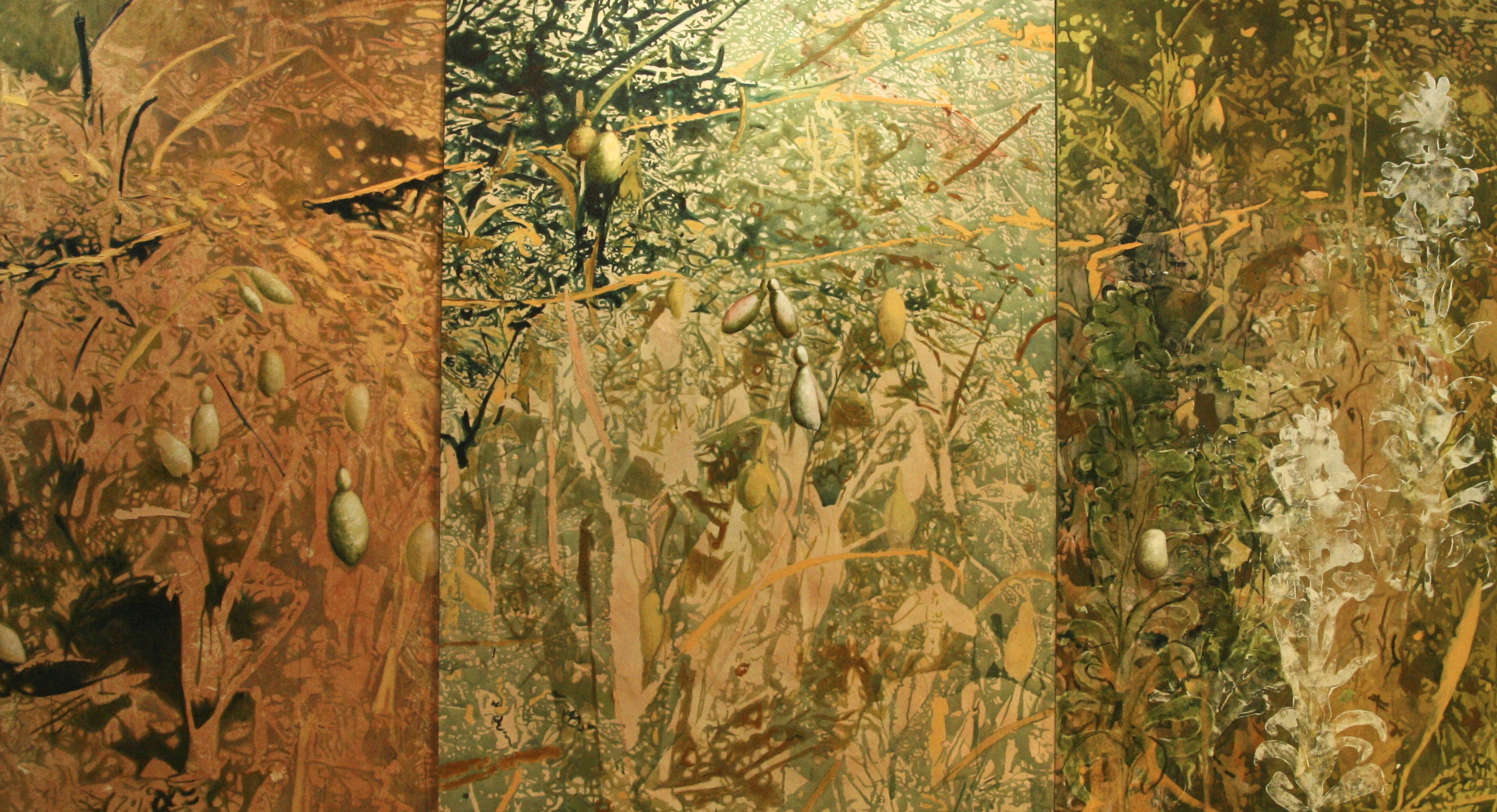
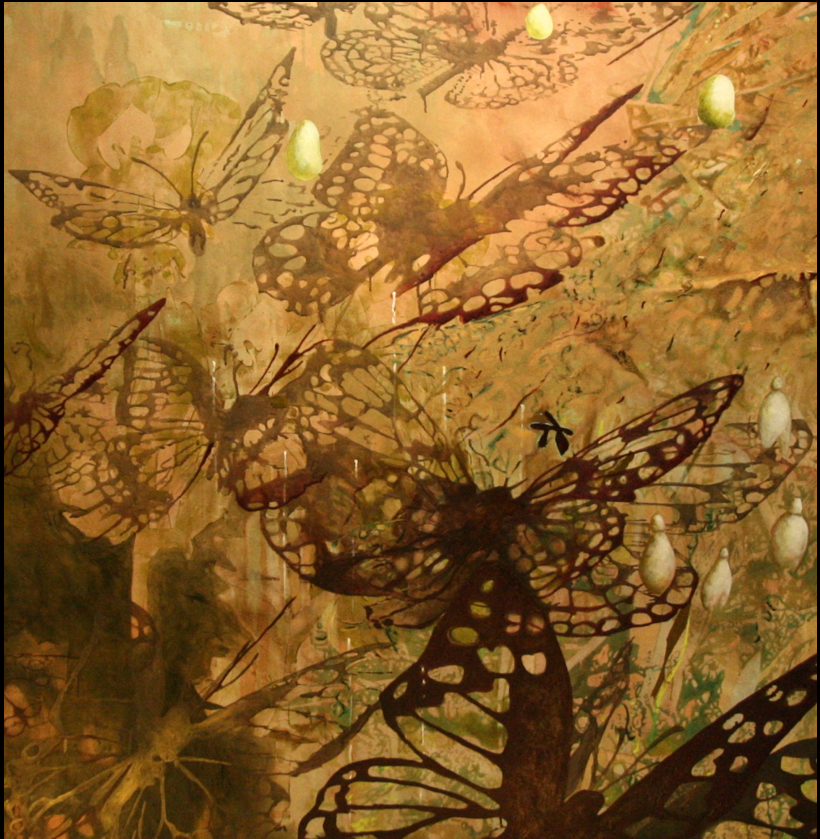
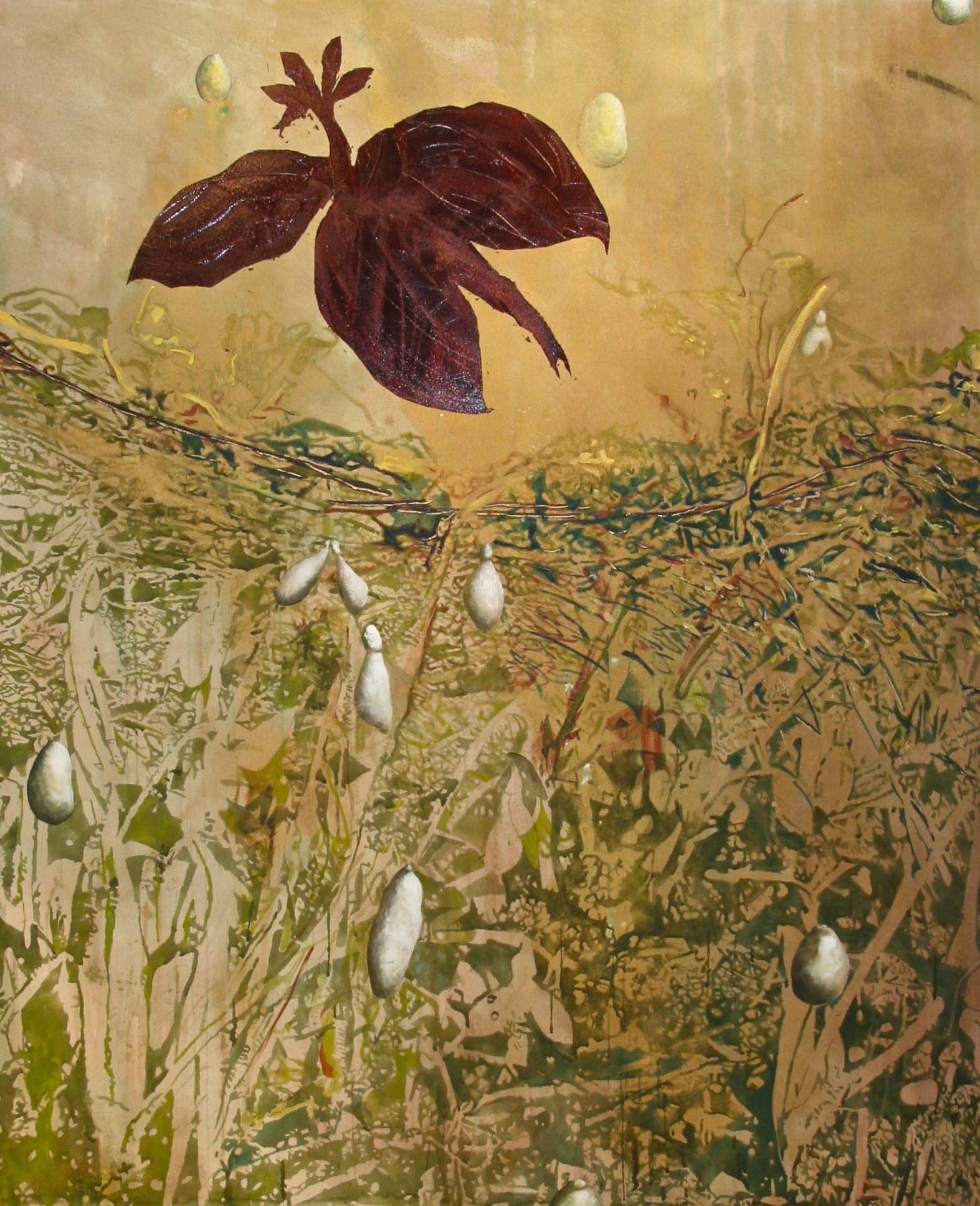
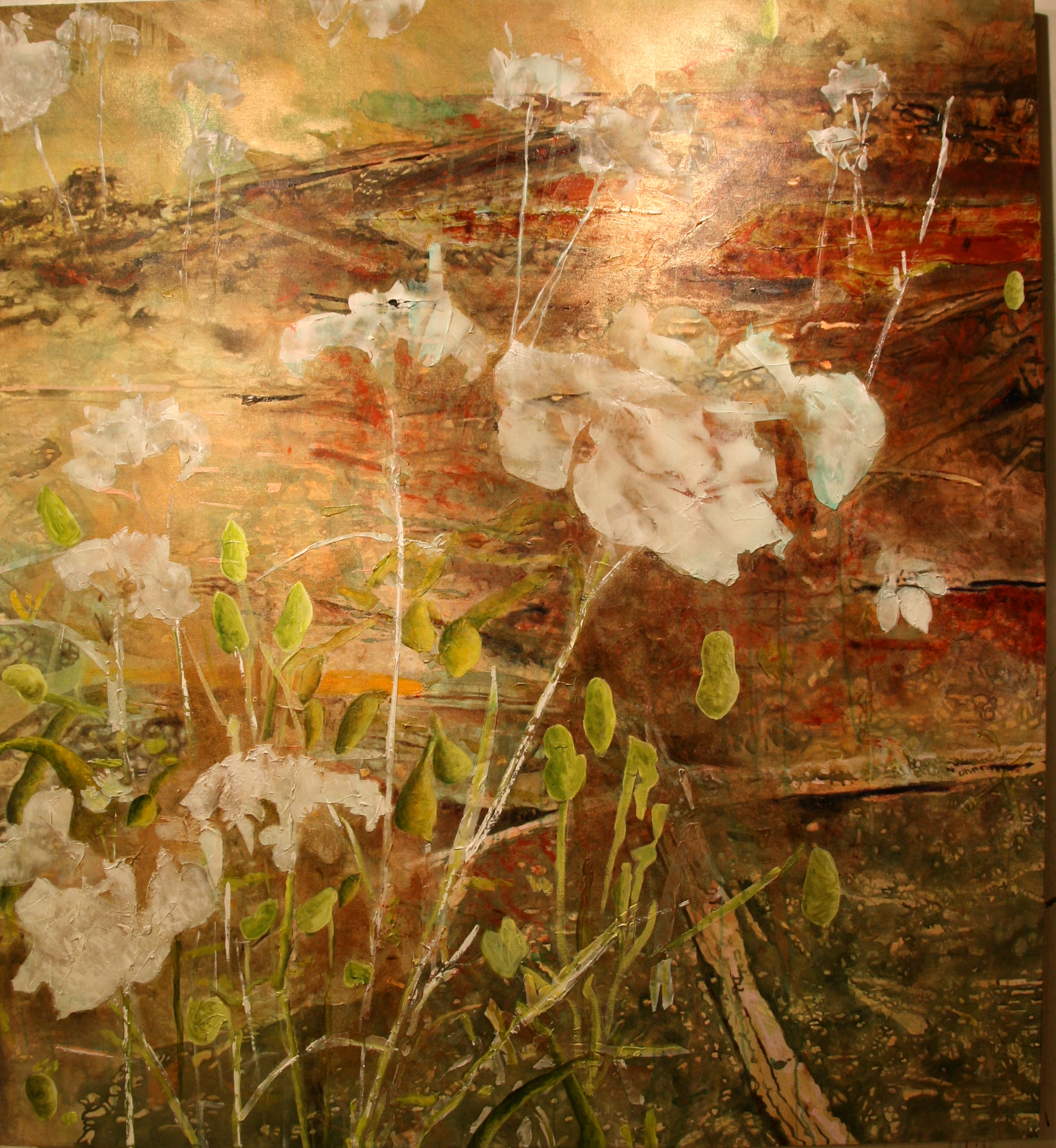
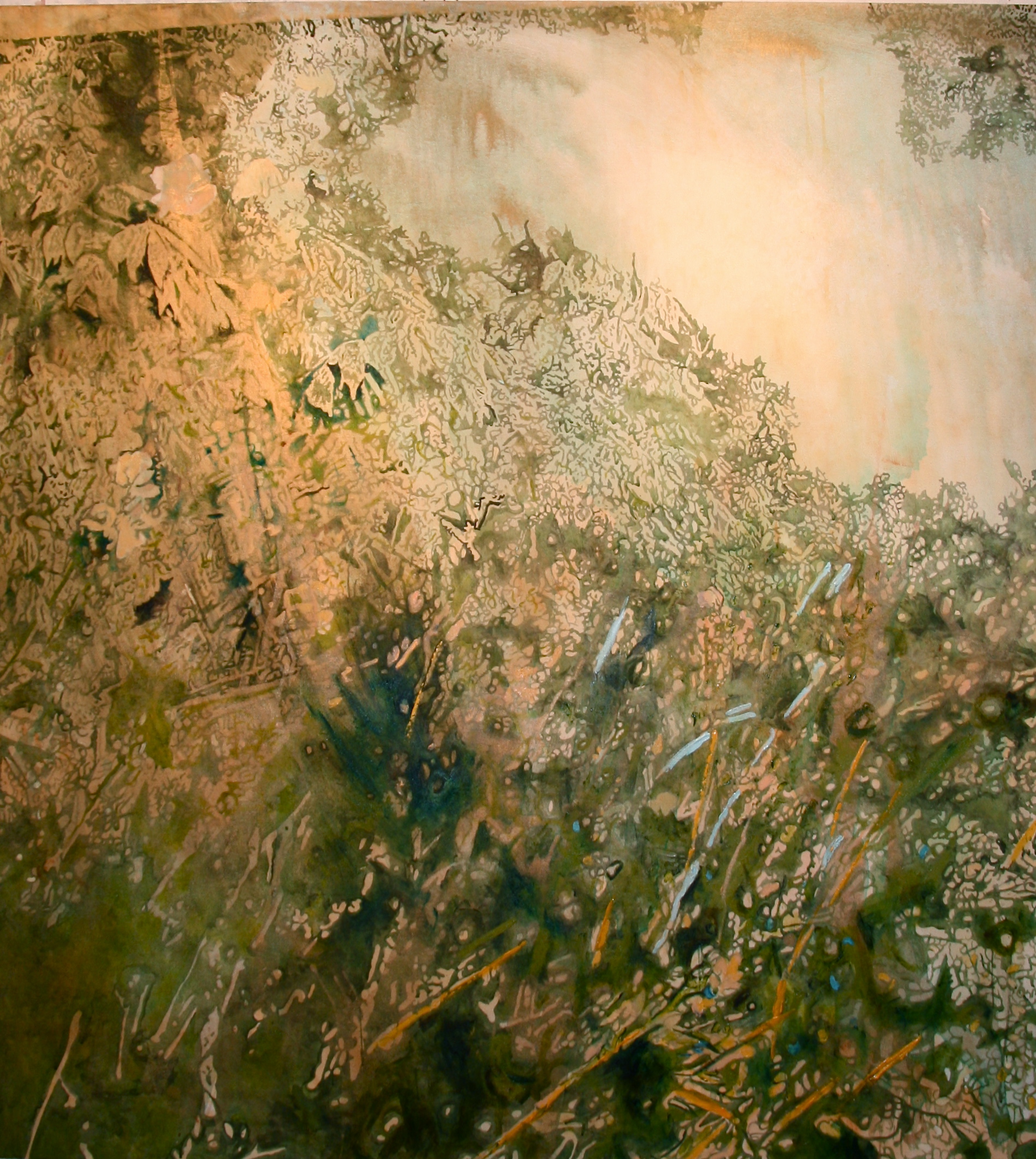
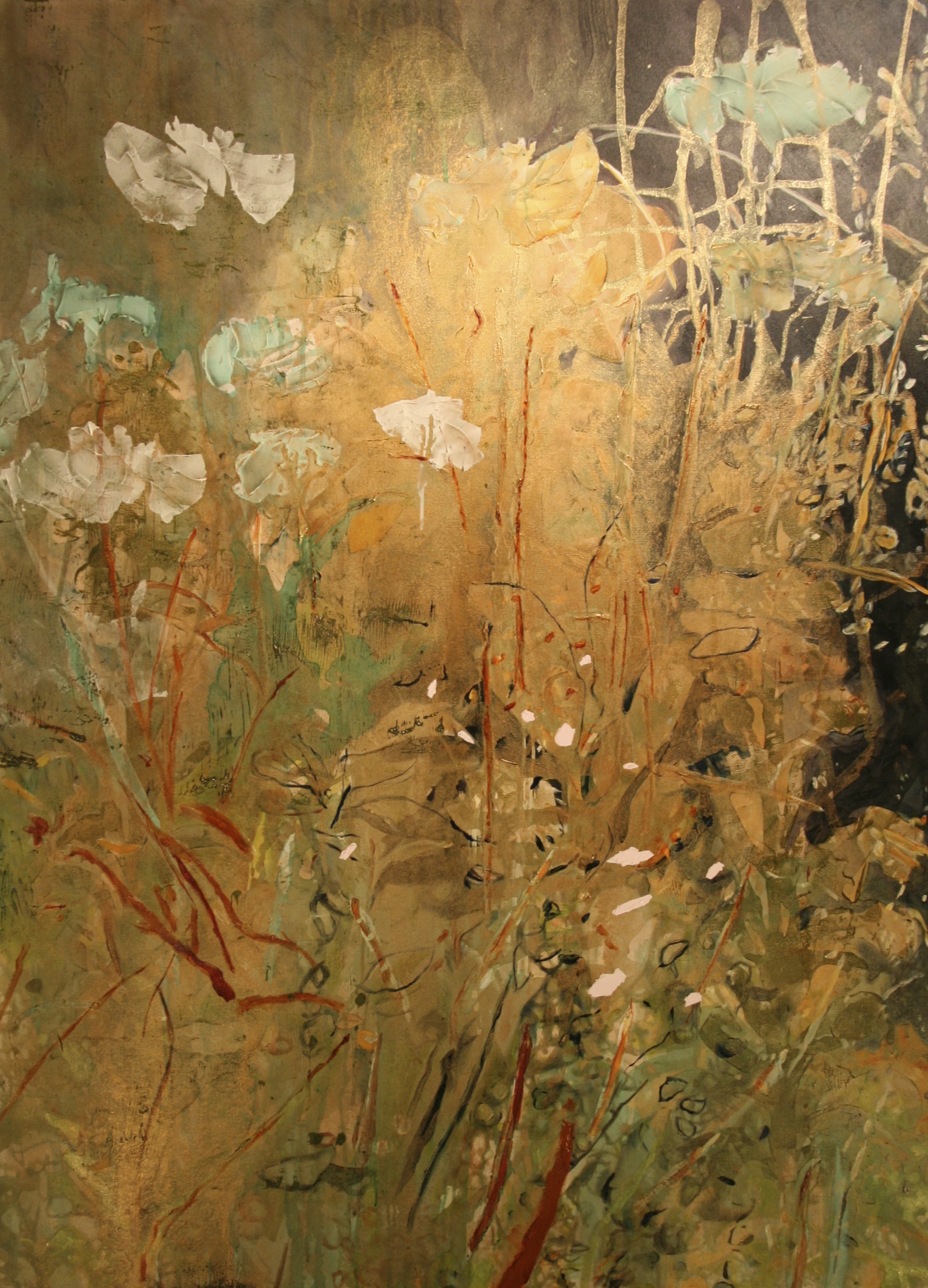
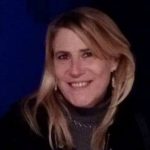
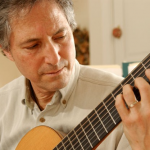
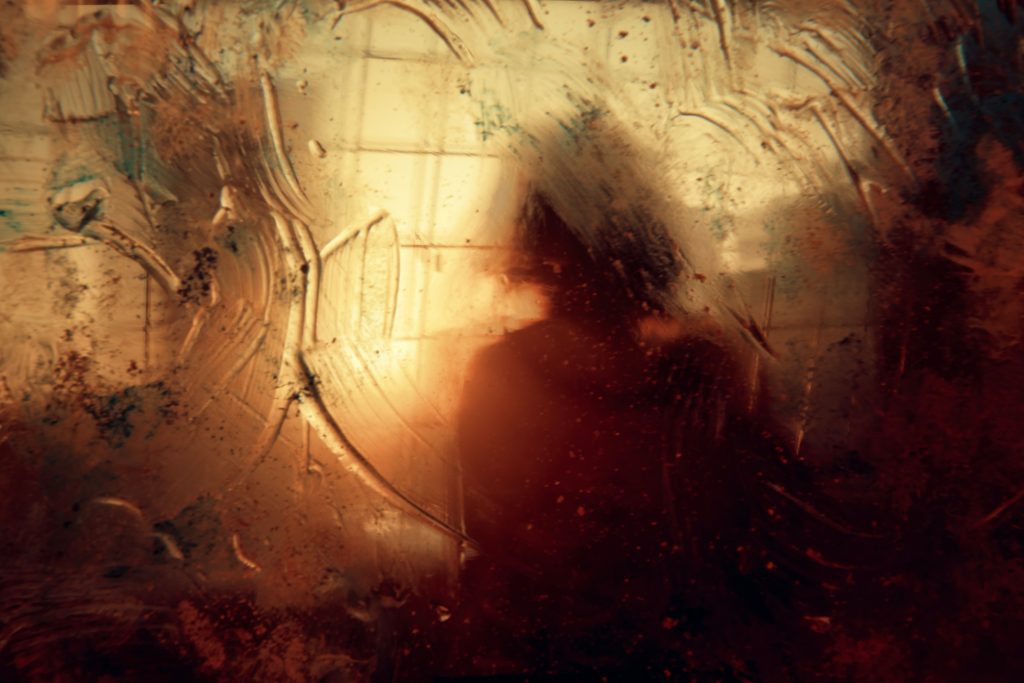

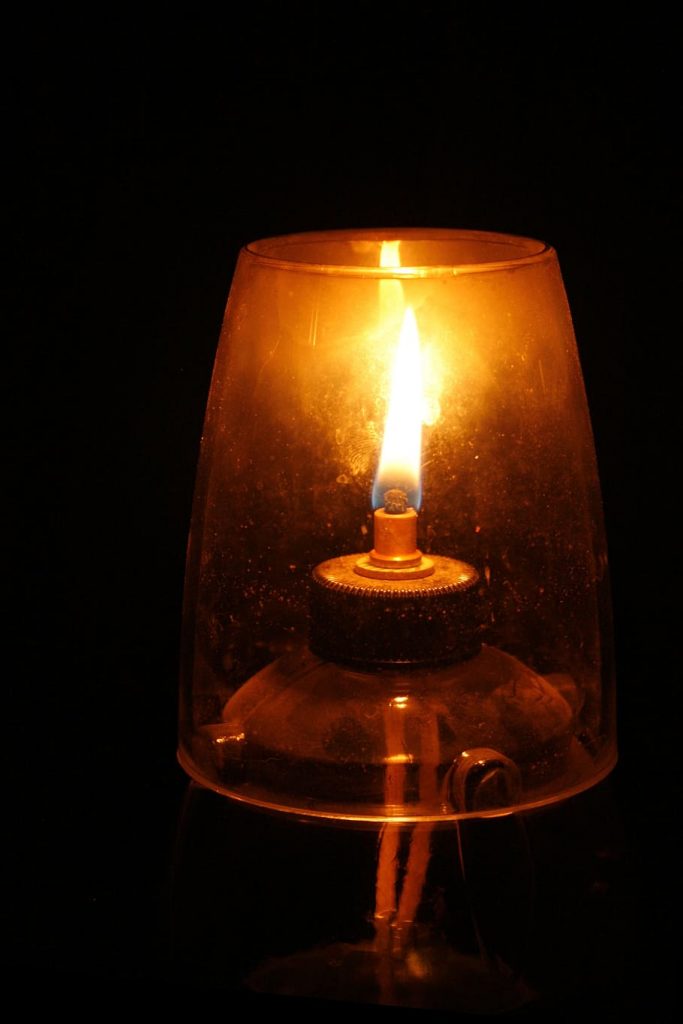
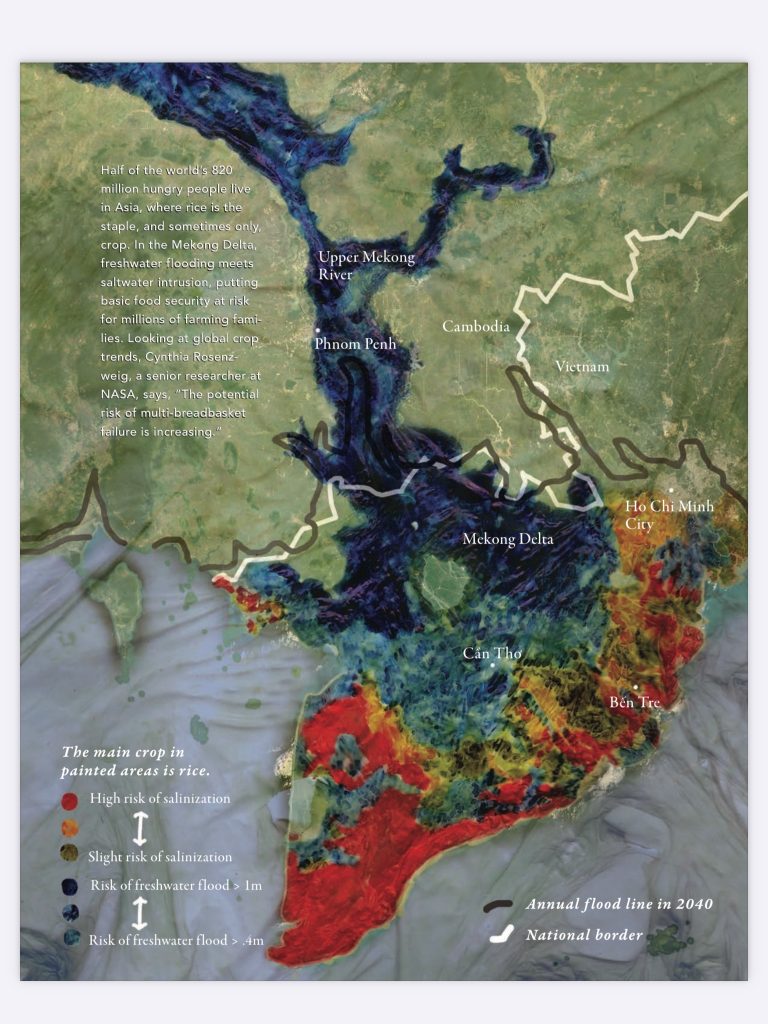
What a fascinating interview with superb questions! I thoroughly enjoyed this terrific article. Your beautiful, articulate comments are deeply inspiring, Paula and Sam!